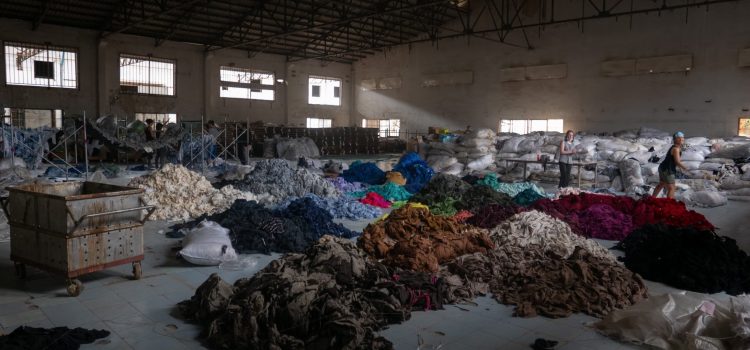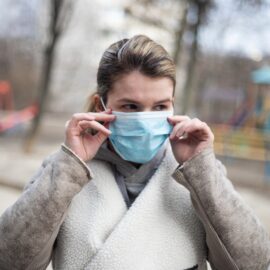
This is a free excerpt from one of Shortform’s Articles. We give you all the important information you need to know about current events and more.
Don't miss out on the whole story. Sign up for a free trial here .
What is fast fashion and why is it bad? How do clothing brands, like Shein or Zara, affect the environment?
A recent investigation found that laborers at a $100 billion clothing giant earn as little as 4 cents per item and work up to 18 hours a day. This is just one of the problems with fast fashion. The industry also has a huge impact on the environment, contributing to climate change, landfill waste, and plastic pollution.
Read on to learn more about what fast fashion is and why it’s bad for society and the environment.
What Is Fast Fashion?
The UK’s Channel 4 recently reported the findings of its investigation into Shein, the $100 billion fast-fashion giant. The report revealed that Shein’s factory workers in China labor under extreme conditions: They churn out at least 500 items a day, earning as little as 4 cents a garment and getting hefty fines for making errors. They also allegedly work 18-hour days, seven days a week, with only one day off per month. To combat the detrimental effects of fast fashion brands like Shein, it’s important to understand exactly what fast fashion is and why it’s bad for workers, the environment, and society as a whole.
Such inhumane working conditions are just one of the problems with fast fashion, a term used to describe cheap, mass-produced garments that are manufactured quickly to keep up with trends. While many brands (such as Zara and H&M) have made it easy and affordable to regularly overhaul your wardrobe or to grab a knockoff of a celebrity’s outfit, this comes at a steep price—not just for workers but also for the environment.
Case Study: Zara
The clothing brand Zara is an example of a fast fashion brand. It aims to get styles from runway to store within weeks, price affordably, and refresh its stores’ inventory every 2 weeks. To achieve this, it shows tailored activities and strong fit:
- A larger design team (double that of H&M’s) quickly translates innovative fashion seen in high fashion and clubs into affordable designs. This reduces the time from inspiration to production.
- It owns its own delivery trucks, optimized for frequent shipments to stores.
- Garments are delivered, ticketed, and hung on racks (instead of folded and boxed), costing more to deliver but reducing time to hitting the store floor.
- It rents large stores in high-traffic places, attracting natural foot traffic. This also reduces normal advertising costs.
- It adds new styles to stores in limited quantities every 2 weeks, encouraging a high rate of return and compulsive shopping.
A rival clothing brand would find it very difficult to compete in fast fashion without adopting the whole set of activities. It might try to design clothes quickly, but without all the reinforcing activities in manufacturing and logistics, its new inventory would arrive in stores ready to sell far later than Zara.
What’s the Environmental Impact?
With the emergence of fast fashion in the 2010s came an increase in global textile production and consumption—about 80 billion pieces of clothing are now sold each year (an increase of 400% over two decades), with Americans being the biggest consumers. However, this growth has had devastating consequences for the environment.
Carbon Emissions
The fashion industry is responsible for about 10% of carbon emissions, producing 1.2 billion tons of carbon dioxide a year—more than flights and shipping combined. For example, one pair of jeans is responsible for about 25 pounds of carbon emissions.
Water Shortages and Pollution
The fashion industry uses up 93 billion cubic meters of water annually for processes like irrigation, bleaching, and dyeing. Cotton, in particular, requires a lot of water—nearly 3,000 liters for one t-shirt. The industry’s substantial use of water has led to water shortages in areas where garments are produced.
There’s also the problem of water pollution: Wastewater from treating and dyeing textiles makes up 20% of industrial water pollution, while runoff from cotton fields often contains harmful pesticides and fertilizers that contaminate freshwater sources. Since 60% of fibers are now synthetic (polyester, the most widely used, is made of plastic derived from fossil fuels), clothes also release plastic microfibers every time they’re worn and washed. Much of this plastic ends up polluting our oceans—according to one estimate, clothing is responsible for half a million tons of microfibers that find their way into the ocean each year.
Overflowing Landfills
These plastic-based textiles also add to non-biodegradable landfill waste: A garbage truck full of clothes goes into landfills every second.
What Can We Do?
For fashion to become more sustainable, both the industry and consumers will need to make changes.
On an individual level, there are a few things you can do so as not to mindlessly contribute to textile waste:
- Support fashion brands that embrace slow fashion, producing clothing using environmentally and socially responsible means.
- Look for alternative sources of clothing, like peer-to-peer shopping sites that sell second-hand clothing. Try renting or borrowing if you need an outfit for a one-off event like a wedding.
- Go for quality, not quantity. Some estimate that people wear an item just 14 times before discarding it—this may be in part because fast-fashion items are normally made of cheap fabrics that don’t last.

Want to fast-track your learning? With Shortform, you’ll gain insights you won't find anywhere else .
Here's what you’ll get when you sign up for Shortform :
- Complicated ideas explained in simple and concise ways
- Smart analysis that connects what you’re reading to other key concepts
- Writing with zero fluff because we know how important your time is






